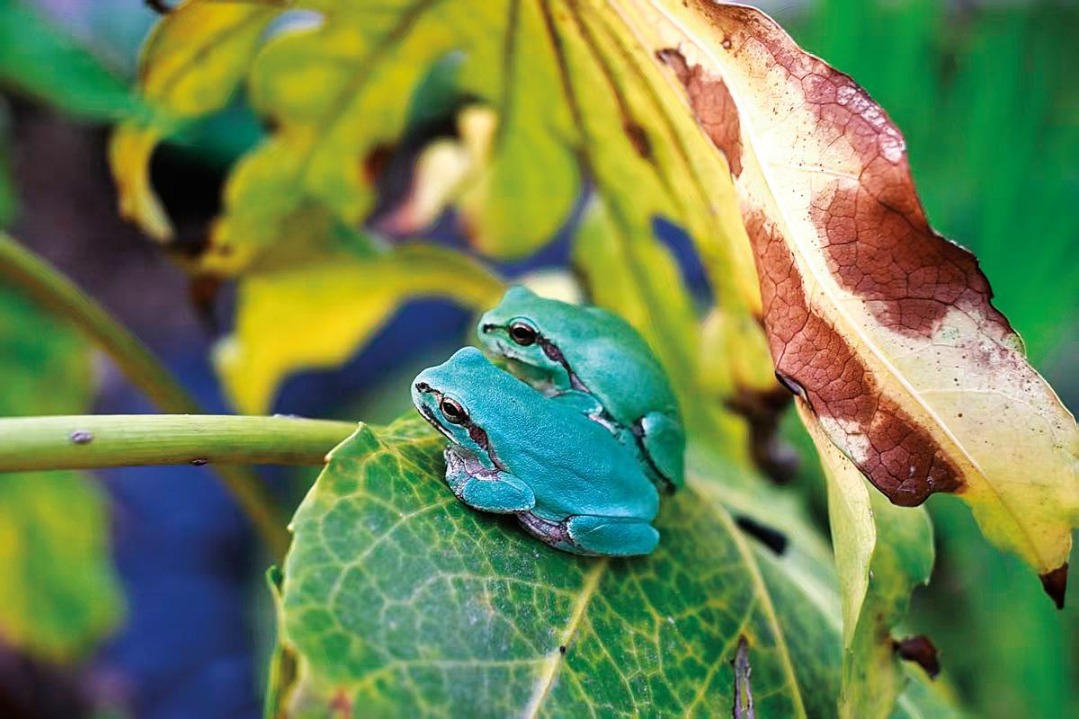Study of Qin State tombs reveals dietary patterns

New research from Chinese scientists offers a glimpse into the diets of individuals from birth to adolescence some 2,500 years ago, revealing insights into social hierarchies and cultural continuity of the era.
The study, published recently in the journal npj Heritage Science, focused on two noble tombs from the early to mid-Spring and Autumn Period between 770 BC to 541 BC.
"Utilizing multiple technological methods, we have studied two noble tombs ... reconstructing their life courses and showing how lifespan dietary shifts shaped by age, gender and sociocultural roles," said Shang Xue, a corresponding author of the study and an associate professor from the School of Humanities at the University of Chinese Academy of Sciences.
The tombs, found at the Ju'an Cemetery in present-day Weinan city in Shaanxi province, contained bronze tripods, skeletal remains from animal sacrifices and two human sacrifices. Based on the funerary objects and tomb size, researchers believe the tombs belonged to the Qin State, known for its diplomacy and expansionist wars with other vassal nations.
One tomb, belonging to a female member of nobility, contained the two human sacrifices and one animal, while the noble male's tomb only had the remains of an animal.
Shang explained that enamel and dentin from teeth found in the tombs were used for stable isotope analysis, while dental calculus provided starch granule analysis. This allowed for a high-resolution timeline of dietary changes throughout their lives. The study examined the remains of all four individuals from the two burial sites, however, the remains of one sacrificed individual were not well-preserved, and therefore no extensive investigation could be conducted on them.
"The study unveils notable social stratification in dietary habits ever since birth," Shang said, noting that while weaning began before seven months, the duration varied significantly based on social status.
Specifically, the female sacrificial victim was weaned at 16 months old, while the female and male aristocrats were weaned at 28 months and 35 months old, respectively. The weaning times for the noble individuals align with ancient texts, which suggest a total weaning period of 24 to 36 months.
"However, the weaning duration of the sacrificial victim was significantly shorter than that recorded in historical texts, suggesting the possibility that both she and her mother did not possess free status," Shang said. "It is plausible that the mother may have been compelled to engage in labor work during the period typically reserved for breastfeeding, thereby necessitating the early weaning of her child, or that the child was forcibly separated from her mother's care."
As the individuals aged, gender differentiation in dietary patterns became apparent. The male aristocrat's isotope levels indicated significantly higher consumption of meat compared to women, whether they were aristocrats or servants. This highlights the pronounced patriarchal culture of that era. His meat intake also surpassed that of commoners, corroborating historical descriptions of "meat eaters" as individuals of higher status during a time when vegetarian food predominated diets.
Interestingly, the male aristocrat's meat consumption saw a brief but marked decline around age 14. This coincided with a period of war and mandatory military service, suggesting his diet shifted to one more akin to common civilians upon his enlistment, Shang noted.
Regarding food sources, the male aristocrat and female sacrificial victim primarily consumed foods such as millet and wheat. In contrast, the female aristocrat had a greater proportion of rice and barley, especially before age 7.
People in the Qin State generally consumed more millet and preferred meat, while those in eastern states primarily ate rice and also consumed some meat or fish. Analyses of oxygen isotopes suggest the female aristocrat experienced a childhood environment warmer and wetter than Ju'an. Starch granule analysis also revealed she consumed rice, wheat and adlay. These findings indicate she likely originated from the eastern states.
"We hypothesized that the woman may be a foreign bride from another region, so her overall dietary structure reflects the integrations of a foreign woman into local customs and habits," Shang concluded.
limenghan@chinadaily.com.cn




































